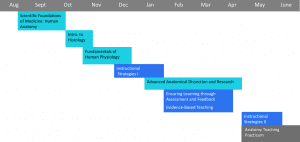More FAE News
- FAE Seminar Series: Dr. Chris Krupenye!
- NSF-funded Digital Paleontology Internship for Undergraduate Students
- Congrats to EJ Huang & Jake Wilson on their recent publication!
- Publication alert for PhD candidates Fernando Torres & EJ Huang!
- FAE is proud to present: Dr. Aneila Hogan!
- Inaugural FAE Day
- FAE outreach at Maryland Science Center!

